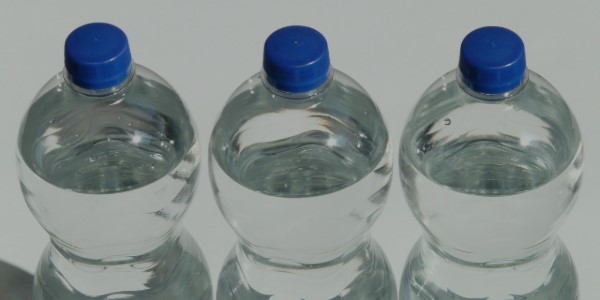Pepsi Will Soon Swap Out Bottled Water For Cans, But Will Customers Buy It?
In the United States, plastic products are everywhere. From the medical and spa equipment made through the reaction injection molding process to the bags and containers we rely on to transport and store food and personal goods, it’s no surprise that worldwide plastic production reached 348 metric tons in 2017. But, of course, we’re paying the price for affordability and convenience. Roughly 40% of all plastic produced is considered to be packaging, which is used only once and then tossed out. What’s more, nearly 1 million plastic bottles are sold every single minute on a global scale. Not surprisingly, we’re now dealing with a colossal pollution problem. But PepsiCo might have a small solution that could help — providing they can get customers on board.
Americans do tend to love flavorful beverages, as is evidenced by the 6.6 gallons of juices per capita that U.S. residents consumed in 2015. PepsiCo can certainly satisfy the average person’s sweet tooth, as the company owns Mountain Dew, Gatorade, Tropicana, 7 Up, Brisk, and many others (along with the sodas under the Pepsi brand). But since more than 40% of children have dental cavities by the time they reach kindergarten, many families want to reduce their sugar intake. It’s rather convenient, then, that PepsiCo also owns Aquafina and Bubly, as well as its own bottled water brand called LIFEWTR, thus allowing consumers to increase their water intake instead of relying on juices and carbonated beverages.
However, just because something is natural doesn’t mean it’s necessarily good for the planet. These drinks may be healthier, but they’re also packaged in plastic bottles. That’s all going to change, according to PepsiCo, as the company has announced huge adjustments in their packaging methods for these products. Starting next year, LIFEWTR will be packaged in 100% rPET (or recycled polyethylene terephthalate), while Bubly and Aquafina will both be sold in aluminum cans. The company is already testing canned Aquafina at restaurants and other food outlets before making the transition to grocery store sales. Once these changes are made, the company hopes, 8,000 tons of virgin plastic use and 11,000 metric tons of greenhouse gas emissions will be eliminated. By 2025, PepsiCo plans to make 100% of its packaging from recyclable, compostable, or biodegradable materials, with 25% of all plastic packaging produced from recycled content.
As PepsiCo Chairman and CEO Ramon Laguarta sad in a statement, “As one of the world’s leading food and beverage companies, we recognize the significant role PepsiCo can play in helping to change the way society makes, uses, and disposes of plastics. We are doing our part to address the issue head on by reducing, recycling, and reinventing our packaging to make it more sustainable, and we won’t stop until we live in a world where plastics are renewed and reused.”
While that sounds great in theory, it might take a bit of effort to convince consumers. Although many people are willing to drink fizzy seltzer water out of cans, drinking plain H2O from these containers might scare some customers away. Since smaller brands have already transitioned to more eco-friendly packaging, there’s at least some precedent set for consumer demand. And since the aluminum cans used will be BPA-free, no one will have to worry about increasing their cancer risk when hydrating. Still, whether the average person will want to drink water out of a can (rather than a closable bottle) remains to be seen. While many of us want to do our part to protect the planet, it might simply be easier to opt for a reusable water bottle than to buy cans of water at the store.




